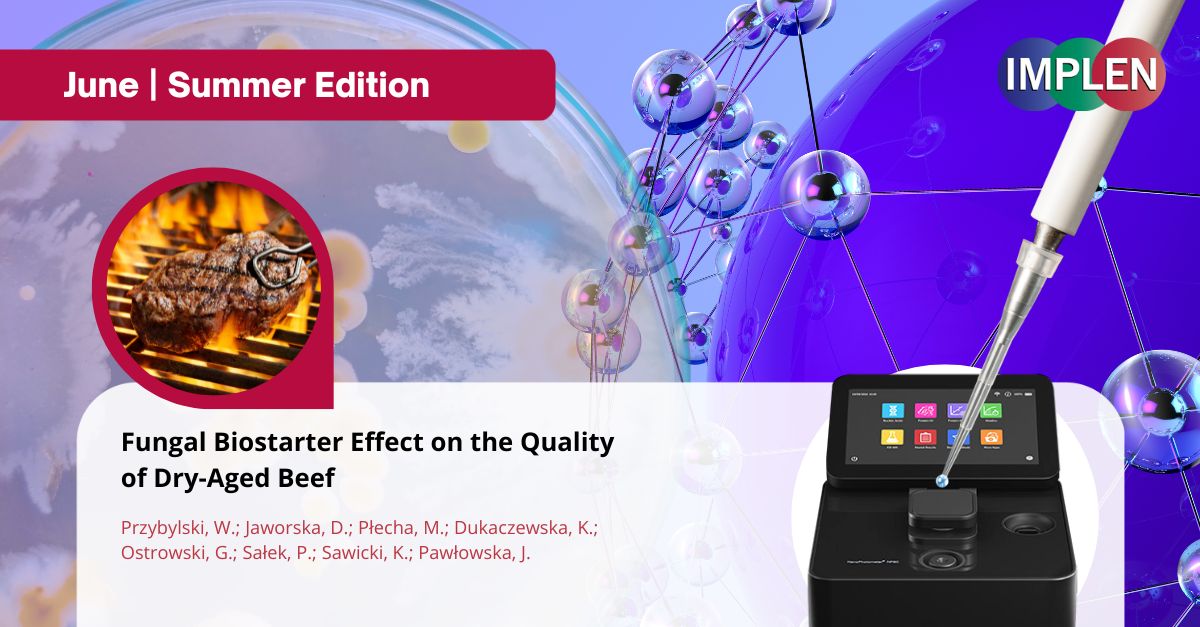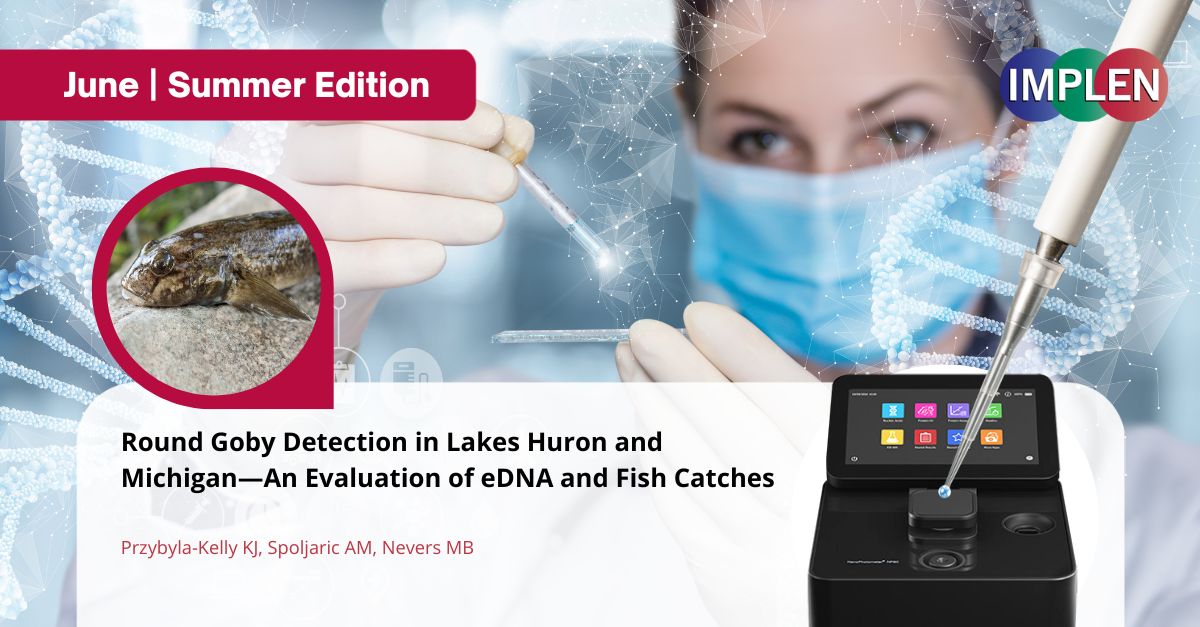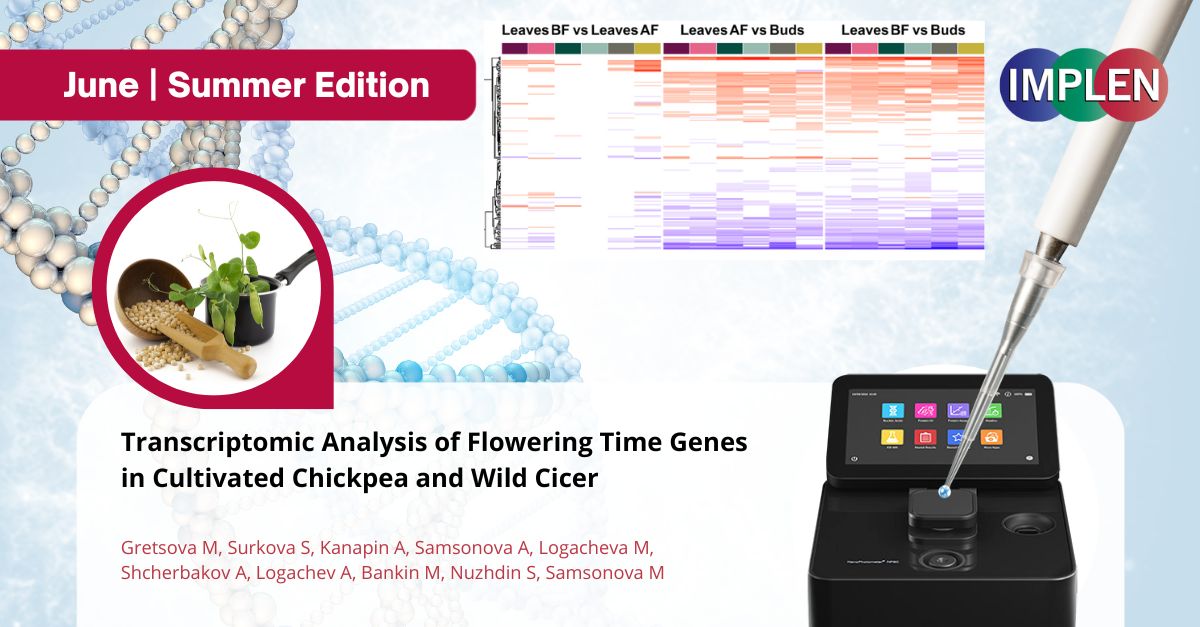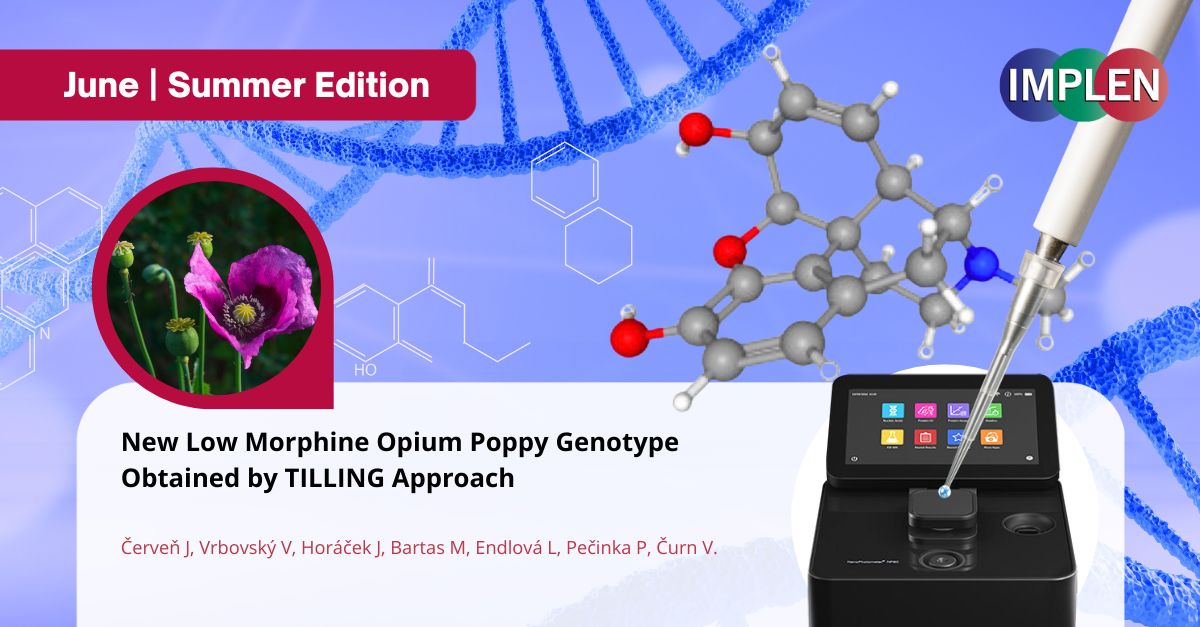Implen Journal Club | June Issue Summer Edition |
|
Join this week’s Implen NanoPhotometer® Journal Club: Summer Edition, with the spirit of beginning of the outdoor BBQ grilling season as we explore a study by Przybylski et al. "Fungal Biostarter Effect on the Quality of Dry-Aged Beef" recently published in the journal of Foods. This research unveils the potential of using a fungal biostarter, Debaryomyces hansenii, to enhance the quality of dry-aged beef. This study showed that incorporating Debaryomyces hansenii positively impacted the microbiological safety and sensory attributes of dry-aged beef. The biostarter suppressed harmful bacteria while promoting beneficial microorganisms, ensuring improved safety. It also intensified the flavor and aroma, enhancing the overall sensory experience. The inclusion of fungal biostarters presents promising implications for consumers and the meat industry. By improving safety and sensory quality, this approach enhances consumer satisfaction, product value, and shelf life. Future research can focus on optimizing application techniques, dosage levels, and potential combinations with other biostarters. Investigating the long-term effects of fungal biostarters on dry-aged beef would provide deeper insights into their impact and potential. This study demonstrates the potential of Debaryomyces hansenii as a fungal biostarter in elevating the quality of dry-aged beef. It improves safety and enhances sensory attributes, opening up new possibilities for the meat industry. The NanoPhotometer® NP80 was used in this study to assess the quality and quantity of DNA spectrophotometrically. |
|
In the second issue, we are excited to share how the NanoPhotometer® is transforming environmental DNA (eDNA) analysis. A recent study by Przybyla-Kelly et al. recently published in the journal of Fishes evaluated its effectiveness in detecting round gobies, an invasive fish species, in Lakes Huron and Michigan. The NanoPhotometer® utilized advanced technology to analyze genetic material from organisms in the environment, making it easier to detect round gobies and other elusive species. The study found that the NanoPhotometer® provided highly accurate results, showing strong agreement with traditional fish catches. This breakthrough can revolutionize invasive species monitoring and management, safeguarding our precious ecosystems. What sets the NanoPhotometer® apart is its cost-effectiveness and reduced labor compared to conventional methods. Moreover, it excels at detecting rare or hard-to-find species that might be missed by standard fishing techniques, enhancing efficiency and conservation efforts. This research showcases the immense potential of the NanoPhotometer® in fisheries management and environmental preservation. Its cutting-edge technology drives scientific advancements and improves our understanding of aquatic ecosystems. The NanoPhotometer® was used to assess eDNA quality which was measured using the 260/280 purity ratio. |
|
In the next issue, we explore the use of the NanoPhotometer® in research that led to the incredible transformation of chickpea from a winter to a summer crop, revolutionizing its cultivation practices. A recent study in the International Journal of Molecular Sciences highlights the remarkable conversion of chickpea, traditionally a winter crop, into a summer crop through successful genetic manipulation of flowering time by Gretsova et al. These groundbreaking findings revealed the genetic basis of flowering time in chickpea and enabled the development of new varieties that thrive as summer crops. This breakthrough offers immense potential for expanding chickpea cultivation in regions with warmer climates, where winter crops were previously unsuitable. The implications of this transformative accomplishment are profound, impacting food security and sustainability. Chickpea, a valuable source of protein and vital nutrients, holds great promise as a staple food globally. This transformation opens doors for increased production and enhanced resilience against climate change. This research not only demonstrates the power of genetic manipulation but also emphasizes the significance of innovation in agriculture. By pushing the boundaries of conventional crop cultivation, we pave the way towards a more diverse and resilient agricultural landscape. These results serve as an inspiration to explore novel approaches for optimizing crop production and ensuring food security for future generations. Let's celebrate this achievement and eagerly anticipate the positive impact it will have on global food systems. Together, let's embrace the possibilities of scientific advancements and forge a sustainable future in agriculture! The NanoPhotometer® was used in this study to measure the concentration of cDNA. |
|
In the final issue, we share groundbreaking research on a new low morphine opium poppy genotype discovered by Červeň et al. The recent study published in Plants unveils a remarkable breakthrough: the identification of a genotype with reduced morphine levels in opium poppy. This discovery carries immense potential for the pharmaceutical industry and cultivation practices. Opium poppy is a vital source of opioids and medicinal compounds, and the availability of plants with lower morphine content can address concerns regarding addiction potential and optimize drug development. The findings shed light on the genetic factors influencing morphine biosynthesis, demonstrating the power of targeted genetic manipulation through TILLING. This opens up exciting opportunities for further research and development, paving the way for the cultivation of opium poppy cultivars with customized alkaloid profiles. Let's celebrate this extraordinary breakthrough and its potential to revolutionize medicinal plant production. Together, we can leverage scientific advancements to enhance healthcare and contribute to a healthier world. The NanoPhotometer® was used in this study to quantify the DNA extracted from the opium plant leaves. |
©2023 Implen. All rights reserved.



